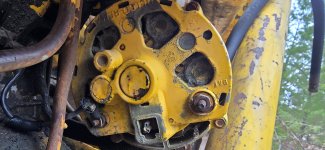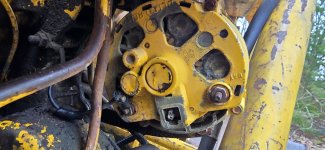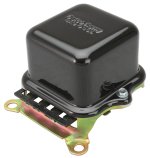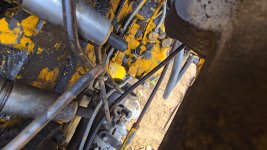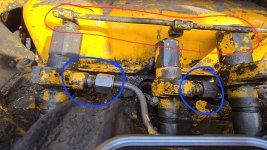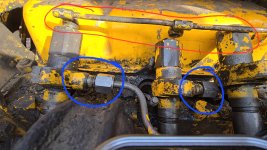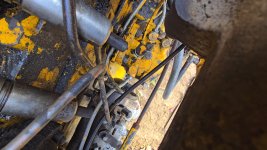Hello everyone,
My question is: will my tractor run with the battery ONLY hooked up to the starter?
Do I need to fix the electrical system before it will run?
Will I destroy the alternator trying to run it without a battery hooked up to it?
I don't have any wires to the alternator, and the gages have a few wires that are dangling here and there.
You can continue reading for more information if necessary.
About the tractor:
I have a 1966 MF40 diesel, 3 cylinder Perkins. It hasn't run in a long time. It stopped running because it had something poured in the fuel tank that turned the diesel to tar... (Enough said)
About me:
I've never worked on tractors before and only started working on diesels a little bit ago, but I have sufficient mechanical experience.
Work performed:
I cleaned out all the fuel lines, injectors seemed okay. I replaced the injector pump and now I am working to make it run.
The electrical system is non-existent on this machine, except for the ground wire and positive battery wire to the starter.
It is starting for a few seconds with ether but then dies..
Thoughts and suggestions would be greatly appreciated!
Thank you!
My question is: will my tractor run with the battery ONLY hooked up to the starter?
Do I need to fix the electrical system before it will run?
Will I destroy the alternator trying to run it without a battery hooked up to it?
I don't have any wires to the alternator, and the gages have a few wires that are dangling here and there.
You can continue reading for more information if necessary.
About the tractor:
I have a 1966 MF40 diesel, 3 cylinder Perkins. It hasn't run in a long time. It stopped running because it had something poured in the fuel tank that turned the diesel to tar... (Enough said)
About me:
I've never worked on tractors before and only started working on diesels a little bit ago, but I have sufficient mechanical experience.
Work performed:
I cleaned out all the fuel lines, injectors seemed okay. I replaced the injector pump and now I am working to make it run.
The electrical system is non-existent on this machine, except for the ground wire and positive battery wire to the starter.
It is starting for a few seconds with ether but then dies..
Thoughts and suggestions would be greatly appreciated!
Thank you!



